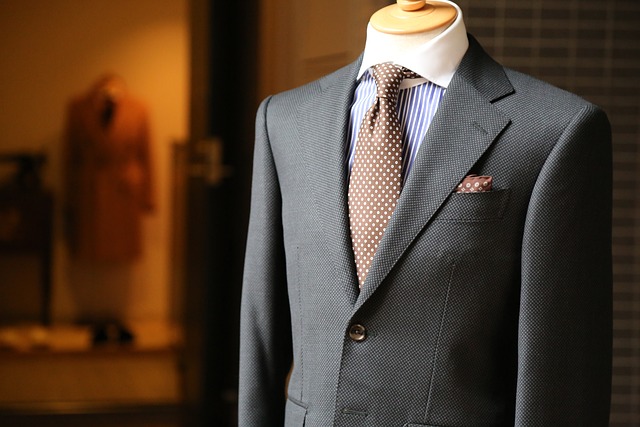A made-to-measure suit is a suit that is tailored specifically for you, from your measurements and choices of cloth, styles, and details. They are less expensive than bespoke suits, but they can still be a very good investment.
The process starts with a consultation, during which you select the fabric – typically from a choice of over a thousand, and ranging in weight from lightweight to heavyweight. Then, you choose a level of construction from half-lined to fully canvassed.
Cost
A well-tailored suit is an essential part of any man’s wardrobe, and it’s important to get a perfect fit so that the suit feels comfortable, looks good, and makes you feel confident. Ready-to-wear suits often don’t fit right – trousers pool down below, jackets are too tight, and buttons don’t pull over your mid-section – but a custom-made suit can be tailored to the precise measurements of your body.
A tailor will take your measurements, and then send them to a manufacturing facility to create a custom suit. This process can take a few weeks and may cost more than getting an off-the-rack suit, but it’s much more efficient.
Once your suit is created, it will be delivered to your tailor’s shop. Your tailor will then make any final alterations that you want and deliver the finished suit back to you. You can usually expect to receive your made-to-measure suit within a few months of your first tailoring appointment.
The price of a made-to-measure suit depends on the company, fabric, and options. A high-end, bespoke suit could cost you thousands of dollars, while an entry-level MTM suit could be in the hundreds or even a few hundred.
If you’re looking for a tailored suit that doesn’t come with the same price tag as a bespoke one, look to shops like SuitSupply and Alton Lane for the best deals. These brands also allow you to choose a suit that’s not fully made to measure, which can help you keep costs down.
Bespoke suits, on the other hand, are completely unique and can’t be found anywhere else. They’re often made from higher-quality fabrics and are designed with your needs in mind, ensuring they’ll last a lifetime.
This type of tailoring takes longer than both off-the-peg and made-to-measure, but it can result in a truly unique suit that will make you feel confident. Bespoke suits are also more expensive, but if you have the budget, they’re worth it for the quality and workmanship involved.
The cost of a made-to-measure suit largely comes down to the fabrics you choose, how much customization you wish to include, and the size of the jacket and trousers.
A good, well-made, bespoke suit will set you back around PS1,000, while a cheaper MTM suit will likely be around PS500, excluding alterations.
Time
Made to measure is a term used to describe a suit that’s made to the customer’s exact measurements. It’s a much quicker process than bespoke, but it can also be more expensive.
Typically, a made-to-measure suit takes between 4 and 8 weeks to make from the date that you order it. However, this depends on the tailor and their workload at that time. If you’re ordering a suit for an important event, it’s best to get started early so that the suit is ready in time.
The main difference between a made-to-measure and a bespoke suit is that a bespoke suit starts with an entirely unique pattern. This means that the suit fits you completely unlike any ready-to-wear suit on the market. It’s also a lot more expensive, as it requires a greater amount of work to create.
To do this, the maker will use a machine to take your measurements. While this can be a faster process than an in-person fitting, it still isn’t as accurate as having a personal tailor do the same thing.
This is because a machine cannot take into account the way your body flexes when you move and bend. It can also have trouble with the size of your pockets and buttons, which might cause them to come loose.
You can often save money on a made-to-measure suit by opting for a less expensive fabric that has a fused canvas construction. This will give you more flexibility with the fabric itself, and you might be able to get a better-quality suit for your money.
In addition, you’ll also have a greater variety of options for trims and fabrics than you would with an off-the-rack suit. Some brands offer a full range of linings and collar felts, which can be a real bonus for busy people who have to wear suits frequently.
Finally, the cost of a made-to-measure suit will vary depending on your chosen cloth and whether you want any other alterations added to it before it’s made.
This could include adding buttons or a sleeve pocket.
Fabric
The fabric used in a Made to Measure Suit plays a big role in its overall look and feel, from the fit to the weight. There are several different types of fabrics to choose from, and choosing the best one for you depends on what your needs are.
Wool, cotton, linen, and silk are all common materials for suiting. They all have different properties, including durability, weight, and quality of weave. You’ll also want to consider where you plan to wear your suit and what time of year it’s expected to be worn.
A wool or cotton suit is a great choice for most people, especially if you’re living in a tropical climate and need something that’s lightweight but still able to wick away sweat. If you’re looking for something a little more sophisticated, try a silk satin or velvet shimmer fabric.
For a less formal look, a linen suit may be more appropriate. This fabric will have a crisper feel and hold its color longer, making it the perfect choice for a summer or autumn suit.
There are several different kinds of weaves used to create suiting, but only a few are considered to be the most important. Most are plain weave, but you’ll also find twill, herringbone, and a host of other patterns.
Whether or not the fabric is woven with a single thread or a series of yarns determines its characteristics, including hardness and softness. For example, a worsted wool suit will have a harder feel and a smoother finish than a twill.
Another fabric-related factor to think about is its luster or shine. A shiny fabric will look and feel luxurious, but it won’t be able to breathe as well as a fabric with a sheen.
Finally, you should also consider how the fabric is woven and what type of weaving it uses. Some weaves are more efficient than others, which means that they’ll use less fabric to make a suit than other types of fabrics.
The best way to choose the right fabric for your Made to Measure Suit is to visit a tailor, ask questions about what kind of weave they use, and see if they offer samples for you to try on. If they do, take advantage of the sample kits that many tailors provide. They’ll help you to find the perfect fabric for your suit without breaking the bank.
Fit
A made-to-measure suit is a great option if you want to look your best at your next formal event. They are crafted from a pre-existing pattern and are altered based on your measurements to give you the perfect fit. This process can take a while, so it’s important to plan ahead if you’re looking for a suit that will fit well.
Getting measured is a crucial part of the process, so you should make sure to choose a reputable company that will provide accurate measurements. It’s also a good idea to try on a few samples before making your final decision. You can even do this online if you prefer.
Once you’ve found a tailor that you like, you can begin the fitting process. Typically, the first fitting will include your measurements taken on a mannequin and you’ll try on various garments to find one that fits your body perfectly. This will allow the tailor to get a better feel for your body’s shape, which is important for making alterations later on.
After this initial fitting, the tailor will have all the measurements they need to create your tailor-made suit. They will then start the production process. This can take anywhere between four and eight weeks, depending on the amount of work that they have going on at any given time. If you need to make any adjustments, they can then organize a third minor fitting.
In addition to your measurements, you will need to decide what kind of cloth and construction you would like for your suit. The most renowned tailors will offer tens of thousands of fabric choices, so you should be able to find something that suits your tastes and budget. You’ll need to select the weight and thickness of the cloth, along with the color and pattern.
The construction of the suit will depend on your chosen cloth, as well as the style of the suit – wide-fitting, slim, or single-breasted for example. You’ll also need to choose whether or not you want a half-lined or fully-canvassed suit.







